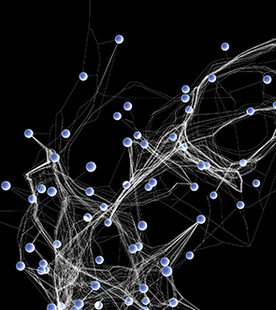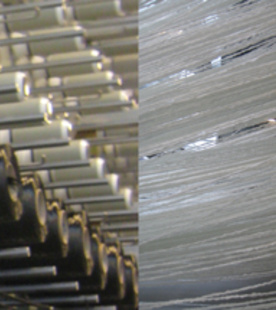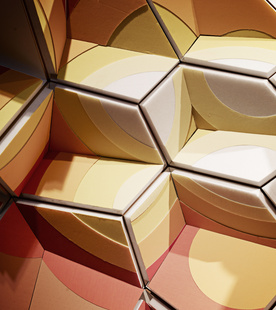Yuliya Sinke: Responsible Consumption and Production: Design of highly specified functionally graded CNC-knitted membranes for sustainable lightweight architecture solutions
This research project is directly related to the UN Sustainable Goal #12 “Responsible Consumption and Production” framework and investigates the aspects of digital simulation and optimised design models for graded CNC-knitted membranes.
Background and Motivation
In the age of global warming and the resulting climate change, man caused a tremendous impact on the environment, leading to a major resource crisis across the planet. Currently, the majority of building elements are standardized to meet the needs of the rapidly growing construction market. These often over-simplified standardised elements are often unnecessary over-engineered, which results in heavier components. The necessity for material modification,as in subtractive manufacturing methods, leads to an increase in construction remains. Despite the efforts of some countries in regards to waste management, energy consumption, excessive material production, and building construction leftovers remain serious environmental problems across the world. Prevention and minimization of misused material is an important method of waste management. The building culture can highly benefit from improved solutions that use less material, more efficient workflows for design, fabrication and installation.
CNC Knit as case

In lightweight structures, the utilization of material is highly optimized and no additional resources are used to form the shape. The low level of entropy in these structures makes them highly efficient in terms of material application and therefore superior in meeting the requirements for sustainable development.
Unfortunately, in applied commercial lightweight architecture, textiles are still used in a subtractive way, resulting in a lot of resource and energy mistreatment. Large membranes, required to be curved for structural stability, normally are made from non-pliable woven fabrics. Therefore, to achieve an overall shape, these membranes need to be discretized into numerous smaller patches. Despite the ease of using CNC-cut technologies, there is still an unavoidable problem of remaining offcuts. Woven fabrics due to the specifications of the technique are very limiting in their local material differentiation. For that reason, there is an enormous amount of post-labour necessary to finish the edges and sew on the details for other elements integration.

It remains a challenge for textile membrane architecture to achieve a similar level of intricacy as is in some high performance-garment industries, where simulation tools and high material differentiation are part of the production. Membrane, as a building element, needs to perform a lot of functionalities at once, and therefore, the current precedent of using homogeneous woven mono-material is not able to provide the necessary properties within a single continuous surface.
This project concentrates on knit as a tailored architecture material that is made-to-measure, created for specific performance and application, and is waste-free in manufacture. Computational tools are used and developed to optimize design workflows and material composition to achieve lightweight designs, time-efficient processes and greater reliability between the designed and manufactured architecture of CNC-knitted membranes.

Focus of the PhD project
The PhD research project positions itself between the practice of architecture, computation, simulation and textile construction. The rich practice of knit material differentiation combined with the input from structural simulation and functional integration will seek new lightweight architectural outcomes that better respond to membrane performance.
The main focus of the PhD project is the relations between the simulation and the actual specification of the membrane material for architecture. The research project explores the following research questions:
- How can we design, simulate and specify material graded CNC-knitted membranes, based on their performance?
- Can the new architectural applications for CNC-knit be discovered through the computational approach for membrane design?

Finding the answers and solutions to these questions will create new design workflows for better integration between membrane design, its materiality and physical performance, digital visualization and physical manufacturing. The results of this research will assess a suitable range of potential scales and applications for knit in architecture.
PhD Method
This PhD employs a Research-by-Design methodology in which experimental design will act as the research probes for the Practice-Based investigations. The creation of design artefacts that are consistently compared to the digital design environment, is an integral part of the research, allowing the work to be critically assessed and evaluated. This work employs the differentiation between three modes of material evidence: The Design Probe, The Material Prototype and the Demonstrator.
The design probe will build the design-led exploration for speculative enquiry, theorizing and setting out the design criteria based on digital computation and simulation exercises. The material prototype will inform the material led investigations, allowing for exploratory testing of simulation tools, material behaviour and membrane performances. The demonstrator will present the application-led investigation, allowing for development towards real-world conditions.






